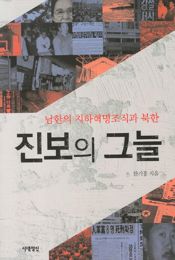 On December 17th, 1998 in the dead of night,
On December 17th, 1998 in the dead of night,
a North Korean semi-submersible craft attempted to slip silently from the southerly South Korean port city of Yeosu. However, the clandestine vessel was picked up by local military radar, and pingers used to track it. Alarmed, it attempted to make a run for it, but by dawn the chase was over. In the open waters off the south coast of Geoje Island, the vessel was sunk.
Three months later on March 17th, it was finally raised from the choppy seas. Inside were found small arms, an ampoule of poison, and a million Japanese Yen. More importantly, however, there was also a wealth of new information on covert North Korean operations inside South Korea, including a mysterious book containing twelve telephone numbers and two addresses…
It would soon
emerge that all the numbers had been coded. Fortunately, the coding system was simple and soon broken; all one had to do was subtract “2” from each number in the sequence. In this way, investigators established that the numbers
included those of four men: Kim Young Hwan, Ha Young Ok, Jo Yu Sik, and Sim
Jae Chun. Understandably, there was interest in who the men were, but moreover what on earth their telephone numbers were doing in a book belonging to a man who had just perished in the sinking of a North Korean semi-submersible.
The man piloting the vessel went by the name of Won Jin Wu, according to documents, including a South Korean ID and passport, that were found along with his body. He was also in possession of a motley assortment of other items: an empty cookie bag from a bakery, a trash bag, and a
glasses case, all from places in the Bongcheon or Sillim districts of western Seoul. Investigators were puzzled: Why was Won riding around the south seas in a North
Korean semi-submersible eating South Korean cookies?
In Won’s bag there was also a rental agreement and two rolls of film, which confirmed his identity as a North Korean spy. He had, it turned out, lived in cheap digs in Bongcheon 6-dong, an area with a large transient student population, from November 22nd to December 16th, 1998, and had only been caught as he was attempting to leave the country. The rolls of film, which had been
submerged for quite some time, were in appalling shape, but with careful image enhancement they
revealed more of what Won had been up to.
It emerged that Won was a veteran spy. For the five years from April 1987 to August 1992 he had been in South Korea disguised as a Malaysian businessman called Jin Un Bang, and had entered South Korea on a number of further occasions thereafter, always disguised as someone from Southeast Asia.
And what had Won been doing in Seoul this time, before he was sent to
the bottom of the sea? The truth was in his covert cache, where investigators found a copy of a magazine called “Sidae Jeongsin [Zeitgeist].” It was the edition of the magazine in which former pro-North Korea activist Kim Young Hwan came completely clean, rejecting both North Korea and its ageing leader, Kim Il Sung. Won was in South Korea to talk to Kim and convince him
to come back into the fold. In short, he wanted Kim to work for the North Korean regime again.
To be continued…

















